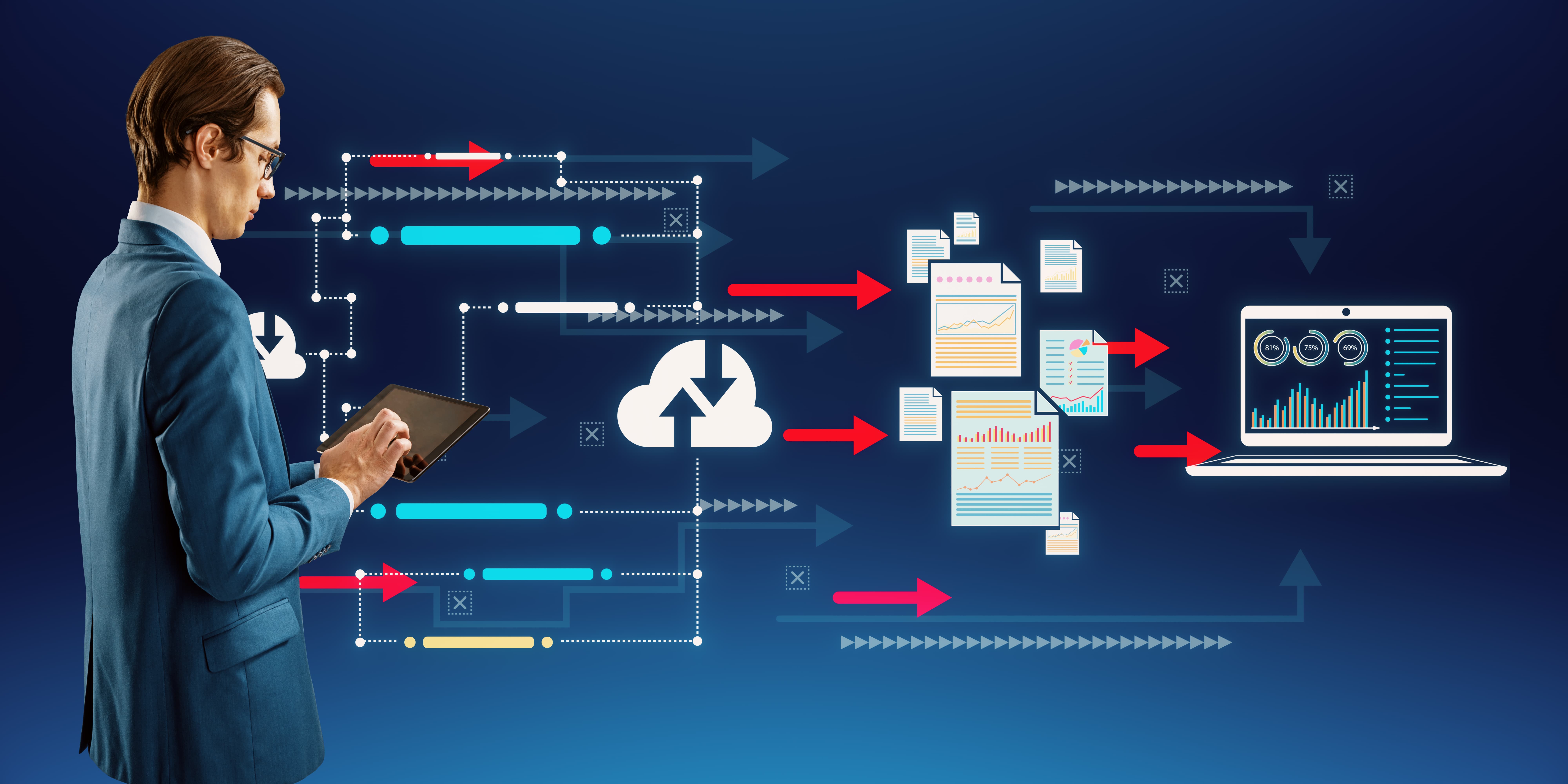 Get SEO-Optimized Articles – Written for Humans, Loved by Google!
Get SEO-Optimized Articles – Written for Humans, Loved by Google!
How to Harness AI in Email Marketing: Benefits and Real-World Examples
Written by Nishant » Updated on: June 17th, 2025

You open your inbox to find dozens of emails competing for your attention—most irrelevant, a few barely personalized, and just one or two that pique your interest. In today's fast-paced, hyper-connected world, standing out in a cluttered inbox has become harder than ever.
Enter artificial intelligence (AI), a game-changing tool that enables marketers to turn email campaigns from generic blasts into intelligent conversations. By leveraging AI, businesses are not only breaking through the noise but also connecting with their audiences in ways that are timely, personalized, and impactful.
In this guide, we'll explore how to effectively use AI in email marketing, touching on key benefits, practical applications, and industry-specific use cases.
What Is AI in Email Marketing?
AI-driven email marketing refers to the integration of machine learning, natural language processing (NLP), and predictive analytics into the planning, creation, and execution of email campaigns. Instead of relying solely on intuition or standard segmentation, AI helps marketers deeply understand user behaviour and engagement patterns to craft smarter email strategies.
Industries actively utilizing AI in their email marketing efforts include:
- E-Commerce: For tracking behavior and recommending products
- Finance: For delivering personalized alerts and investment advice
- Healthcare: For timely patient reminders and health campaigns
- Hospitality: For location-specific travel tips and loyalty updates
- Gaming: For announcing in-game events and engaging users
- Media & Streaming: For crafting tailored onboarding and content emails
Why Integrating AI into Email Marketing Pays Off
AI reshapes email marketing in ways that deliver value to both marketers and recipients. Here are the leading advantages:
1. Hyper-Personalization at Scale
AI enables brands to move beyond "Dear Customer" greetings. By analyzing browsing history, past purchases, and behavioural triggers, AI crafts email content specifically tailored to each recipient's preferences.
2. Time-Saving Automation
Tasks like list segmentation, campaign scheduling, and performance tracking can be fully automated, streamlining workflow and freeing up marketing teams to focus on strategy.
3. Smarter Targeting
Built-in algorithms segment audiences more accurately based on demographics, behaviors, and buyer journeys—enhancing relevance and reducing email fatigue.
4. Higher Engagement Rates
AI identifies when subscribers are most active and personalizes subject lines and delivery times accordingly, boosting open and click-through rates.
5. Reduced Campaign Costs
With smart workflow automation and accurate targeting, AI lets small teams run sophisticated campaigns at scale—minimizing effort and budget.
6. Data-Guided Decisions
AI transforms raw campaign data into meaningful insights, allowing you to prioritize what works and discard ineffective tactics.
Powerful AI Techniques for Effective Email Marketing
1. Smarter Segmentation Using AI
Behavioral Clustering: AI groups users based on interactions such as clicks, purchasing frequency, and site navigation.
- RFM Modeling: By measuring recency, frequency, and monetary value, AI predicts customer value and churn risk.
- Value-Tiered Campaigns: AI ranks users by lifetime value, enabling premium-targeted content for top spenders.
- Real-Time Updates: AI adapts segments on-the-fly as customer behavior evolves.
- Geo-Targeting: Emails adapt to local language, offers, and regional trends.
2. Creating Personalized Content with AI
- Dynamic Product Feeds: Showcase items based on individual interests.
- Emotionally Tuned Copy: NLP tools assess sentiment and suggest tone adjustments.
- Smart Bundling: AI recommends product combos frequently purchased together.
- Unique Messaging: Templates adjust layout, tone, and visuals for specific users.
3. Optimizing Send Times & Frequency
- Ideal Timing: AI identifies high-engagement windows per time zone.
- Frequency Control: It monitors for email fatigue and adjusts cadence automatically.
- Seasonal Alerts: Recognizes cyclical trends and triggers time-sensitive content.
4. Seamless Campaign Automation
- Event-Based Triggers: AI sends instant responses to user actions—like cart abandonment or form submissions.
- Lifecycle Motions: Delivered emails guide users from lead stage to conversion.
- Content Assistance: Tools recommend subject lines or layouts based on historical success.
5. Advanced A/B Testing with AI
- Quick Testing: Instantly tests various versions and rotates in the best performers.
- Granular Insights: Helps understand the emotional or contextual drivers behind top-performing variations.
- Continuous Improvements: AI keeps optimizing even post-deployment.
6. Additional AI Applications in Email
- Retargeting: Identifies users who showed interest but didn't convert, then re-engages them with tailored messaging.
- Language Consistency: Maintains brand tone while adapting messages per demographic.
- Journey Mapping: AI visualizes a subscriber's full path and delivers critical content at each stage.
How to Maximize Your AI-Powered Email Marketing Strategy
1. Start with Specific Goals
Knowing what you want to achieve helps you select the right AI tools and metrics.
- Example: Want to reduce cart abandonment? Set a goal to re-engage drop-offs within an hour using AI triggers.
- Tip: Use measurable KPIs like open rates or conversions to track progress effectively.
2. Prioritize High-Quality Data
Garbage in = garbage out. AI thrives on well-organized, clean information.
- Example: Regularly cleanse your mailing list to remove dead leads and inactive addresses.
- Tip: Use centralized data systems to integrate behavioral signals across platforms.
3. Test One Feature at a Time
Focus on incremental changes to understand what's driving improvement.
- Example: Start with AI-optimized subject lines, analyze impact, then try send-time optimization.
- Tip: Always set a baseline control group to compare changes.
4. Keep Empathy in Every Email
AI enhances—but shouldn't replace—human empathy. Keep your messaging personal.
- Example: Include a note from a team member or thoughtfully chosen signature.
- Tip: Regularly audit AI-generated messages for tone, clarity, and relevance.
5. Stay Legally Compliant
Strict adherence to privacy laws like GDPR and CCPA is non-negotiable.
- Example: When collecting personal info for personalization, be explicit about intent and offer an opt-out.
- Tip: Maintain transparency and provide clear unsubscribe mechanisms.
Challenges You Might Face and How to Overcome Them
Despite the advantages, AI also brings a few hurdles:
- Data Privacy: Transparency and compliance with regional laws are essential.
- High Initial Costs: Smaller businesses may encounter barriers to entry.
- Learning Curve: Training may be needed to take full advantage of AI tools.
- Over-Automation: Too much AI can lead to impersonal, robotic messaging.
- Data Dependency: Flawed data can severely impact AI's effectiveness.
AI in Action: Real-World Use Cases
- Retail: Walmart uses AI to suggest follow-up products post-purchase, enhancing upsell potential.
- E-Commerce: Amazon triggers time-sensitive cart reminders with personalized deals to recover lost sales.
- Healthcare: Teladoc leverages AI for appointment nudges and custom health advice based on user history.
- Hospitality: Marriott tailors travel offers and sends loyalty-rich content based on guest preferences and travel habits.
The Future of AI in Email Marketing
AI's role in email marketing is only set to deepen. Soon, we'll see even more refined personalization, real-time sentiment understanding, intelligent design suggestions, and autonomous journey orchestration. As tools evolve, the focus will shift from campaign execution to intent-based communication at scale.
With AI, emails can transform from inbox clutter to campaign gold—offering meaningful interactions that support better relationships and lasting customer loyalty.
Final Thoughts
Incorporating AI into email marketing represents more than just a technological trend—it's a fundamental strategic evolution that transforms standard campaigns into intelligent, personalized conversations. By leveraging machine learning, natural language processing, and predictive analytics, brands can break through inbox clutter with hyper-personalized content, optimized send times, smart segmentation, and data-guided decision-making. Companies that embrace these AI capabilities now position themselves for stronger customer engagement, higher ROI, and sustainable brand growth in an increasingly competitive digital landscape. As AI tools continue to evolve, the future promises even more sophisticated personalization and autonomous journey orchestration—turning emails from annoying inbox fillers into valuable, relationship-building touchpoints that foster lasting customer loyalty.
Note: IndiBlogHub features both user-submitted and editorial content. We do not verify third-party contributions. Read our Disclaimer and Privacy Policyfor details.
Copyright © 2019-2025 IndiBlogHub.com. All rights reserved. Hosted on DigitalOcean for fast, reliable performance.
















